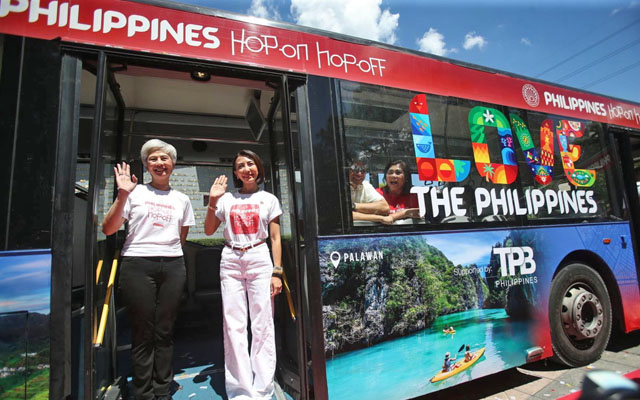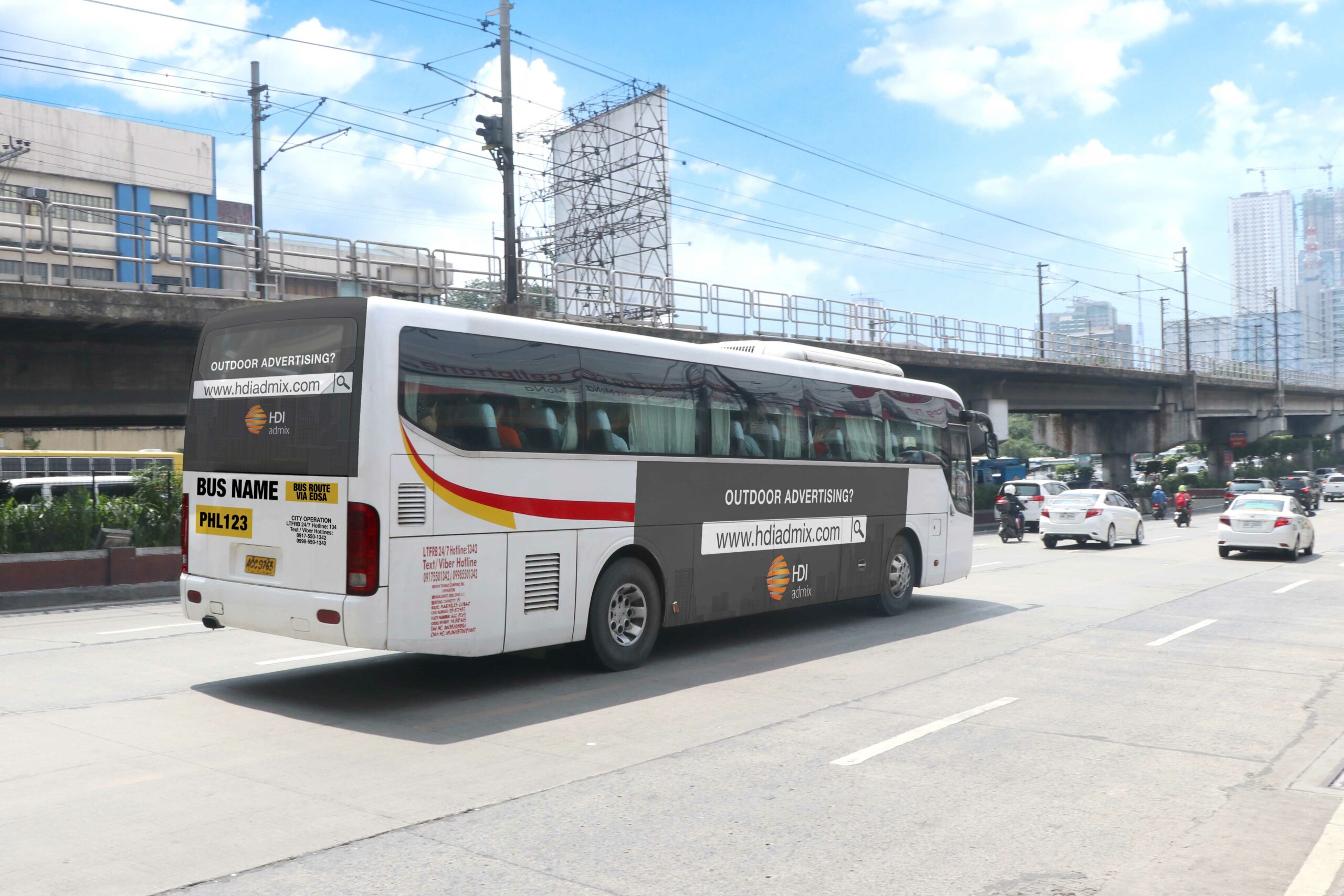Budget-friendly Transit Advertising Philippines for Brand Name Understanding
Budget-friendly Transit Advertising Philippines for Brand Name Understanding
Blog Article
How Transportation Advertising And Marketing Can Transform Public Transport Spaces Into Dynamic Marketing Platforms
Transit advertising holds significant capacity to redefine public transportation spaces into vibrant advertising and marketing platforms that engage and notify. As we discover the multifaceted benefits and developing techniques of transit advertising, it raises the inquiry of just how this makeover can redefine our communications with both brands and the urban environment.
Advantages of Transportation Advertising And Marketing

Additionally, transportation advertising is extremely economical compared to standard media. It permits advertisers to achieve high perceptions at reduced expenses, making the most of return on financial investment. The captive target market of commuters supplies an opportunity for brands to share their messages to individuals that are often responsive throughout their travel times.
Moreover, the dynamic nature of transit advertising and marketing allows campaigns to be upgraded frequently, guaranteeing that messaging continues to be prompt and pertinent. This adaptability can be vital in responding to market patterns or advertising occasions, keeping the brand top-of-mind for customers. Last but not least, the prevalent presence of transit advertising and marketing adds to brand recall; repeated exposure within familiar traveling contexts enhances brand name awareness and fosters consumer loyalty, eventually driving sales and boosting brand credibility.
Sorts Of Transportation Advertising And Marketing
Mass transit systems provide various formats for marketing, each satisfying different advertising methods and target market involvement approaches. One noticeable kind is external bus and train covers, which cover the whole lorry and develop a mobile signboard impact, enabling high presence in metropolitan atmospheres. These wraps can capture focus as they traverse hectic streets, reaching a diverse audience.
Another popular layout is indoor marketing, that includes posters, digital displays, and ads on transit seats. These positionings engage passengers throughout their trip, strengthening brand messaging in a confined room. Digital shows, in particular, supply the benefit of dynamic web content, allowing advertisers to upgrade messages in real-time.
Station advertising and marketing is likewise significant, including posters, banners, and interactive booths within transportation stations. These advertisements take advantage of foot traffic and can target details demographics based on area.
Finally, promotional collaborations with transit authorities can cause unique projects, such as themed transit experiences or occasions, enhancing the general engagement with commuters. Each sort of transit advertising and marketing provides distinctive benefits, enabling brands to tailor their strategy to efficiently reach their target market within the public transport ecosystem.
Engaging Travelers Effectively
Travelers are significantly inundated with advertising and marketing messages during their everyday trips, making it essential for brands to involve them in innovative ways. To catch focus in this crowded area, marketers need to prioritize creativity and significance. Making use of captivating visuals and succinct messaging can significantly improve the probability of involvement.
Interactive elements, such as QR codes or augmented truth functions, can additionally change fixed advertisements into immersive experiences, fostering a deeper connection with the audience. Brands must concentrate on resolving commuters' needs and interests, tailoring messages to resonate with their way of life, whether with promotions for regional companies or services developed to improve their commuting experience.
Furthermore, timing plays a vital function; tactically putting ads during peak commuting hours can optimize presence and effect. Engaging commuters effectively also entails leveraging social media sites assimilation, enabling travelers to share their promotions or experiences straight from transportation platforms, thus enhancing brand reach.
Basically, reliable interaction hinges on understanding the traveler journey and creating engaging, interactive, and appropriate advertising experiences that not only record interest but additionally drive action and loyalty. By doing so, brand names can change public transport right into a vibrant advertising and marketing system that reverberates with its target market.

Measuring Advertising Impact
How can brands precisely assess the effectiveness of their marketing campaign in transit environments? Measuring the impact of transportation advertising and marketing requires a complex method that combines qualitative and quantitative metrics. One widespread technique is tracking engagement via mobile analytics, where brand names can assess foot web traffic patterns and app interactions in the past, during, and after projects.
Studies can provide beneficial insights into brand recall and consumer belief, enabling brand names to gauge exactly how well their messages reverberate with commuters. Additionally, keeping track next page of social media interaction pertaining to specific projects can expose changes in public assumption and brand discussion.

Additionally, collaborating with transit agencies can improve measurement accuracy, as they usually have detailed demographic data on ridership trends. By integrating these approaches, brands can establish a detailed understanding of their advertising and marketing performance, making certain that their projects not just get to yet additionally influence their target market properly.
Future Fads en route Advertising And Marketing
A substantial change look at here is expected in transportation marketing as technological advancements and changing customer actions improve the landscape. Transit Advertising Philippines. The combination of digital displays and multimedias is expected to enhance involvement, enabling brand names to supply vibrant material that resonates with varied target markets. As public transportation systems welcome smart modern technology, marketers will leverage real-time information analytics to tailor messages based on guest demographics and habits
Moreover, boosted truth (AR) is poised to change the method travelers connect with ads. By offering immersive experiences, AR can change a mundane trip right into an interesting story that catches focus and promotes brand commitment. This development will likely urge advertisers to develop more experiential projects that drive consumer interaction.
Sustainability is an additional important fad influencing transportation marketing. As ecological awareness grows, brand names will significantly seek to line up with environmentally friendly techniques, utilizing lasting products and promoting eco-friendly campaigns within their campaigns.
Final Thought
In conclusion, transit advertising provides considerable advantages by improving brand exposure and engaging a captive audience. As trends evolve, the potential for innovative interactions between travelers and brand names is positioned to grow, guaranteeing that transit advertising remains a vital part of modern-day advertising and marketing methods.
Transportation marketing holds significant potential to redefine public transport rooms into dynamic advertising systems that involve and notify. The prevalent existence of transit advertising and marketing adds to brand recall; duplicated direct exposure within familiar traveling contexts enhances brand awareness and cultivates consumer loyalty, inevitably enhancing and driving sales brand name track record.
Exactly how can brand names precisely evaluate the useful source performance of their marketing campaigns in transportation atmospheres?In verdict, transit advertising uses significant benefits by enhancing brand name exposure and involving a restricted target market. Transit Advertising Philippines. As patterns advance, the capacity for cutting-edge interactions in between brands and travelers is poised to grow, making certain that transit advertising and marketing stays an essential component of contemporary marketing methods
Report this page